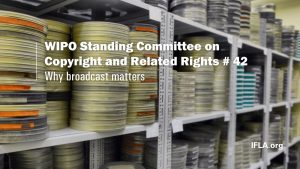It can often feel like governments are playing catch-up with the internet.
As digital technologies play an increasingly indispensable role in everything we do, the risks that they also bring are becoming clearer. As a result, there is pressure on decision-makers to ‘do something’, in order to respond to increasingly widespread concerns.
The problem is that the internet is, by its nature, a global infrastructure. Much of its value and potential to support education, research, understanding and more comes from the possibilities it offers to access information across borders.
When decisions are taken nationally, they often differ. This can be for reasons of political priority, legal tradition, or simply the capacity that governments themselves have to design and implement legislation.
This runs counter to the logic of the internet as a unified infrastructure. Where there are different rules, there are barriers and uncertainties, not least for those sharing ideas and content online who understandably do not want to face legal liability.
This is called internet fragmentation, and has been highlighted as a key issue in recent efforts to intensify global work on internet governance, not least in the UN Secretary General’s work on Digital Cooperation, the ongoing Global Digital Compact, and most recently, as the first key priority of the Internet Governance Forum (IGF) Leadership Panel for this year’s IGF in Kyoto, Japan.
Typically, concerns about internet fragmentation focus on the way in which rules around data transfer (for example, prohibiting flows outside of borders), or forms of privacy or platform regulation that tend to discourage offering services across borders given the risks faced.
However, one driver of fragmentation not necessarily so often talked about is the way that international copyright works today.
The unseen divider?
In some ways, this is ironic. The original logic behind regulating copyright internationally – through the Berne Convention and the texts that have followed – was that for it to be possible for authors (or more likely, publishers) to be able to sell books into another country, they needed to be sure that they would receive a good measure of protection there.
As such, the argument is made that copyright is essential for markets to work across borders, and indeed the IGF Leadership Panel’s contribution to the Forum this year underlines the value of respecting intellectual property rights.
However, copyright as a whole is made up not just of rights, but also the limitations on them. In addition to the length of time they last, there are exceptions allowing for activities such as quotation, news reporting, education, preservation and research.
These offer a safety valve, helping to ensure that the monopoly rights created by copyright are balanced by public interest concerns. Otherwise, the logic of profit-maximisation risks prevailing, and the benefits of learning, innovation and safeguarding heritage are forgotten or discounted.
However, while international copyright law is prescriptive about what minimum rights should be guaranteed, it leaves far more flexibility when it comes to exceptions, and is silent around cross-border working. As a result, there are as many sets of copyright exceptions as there are countries in the world.
The impact of this is just the same sort of uncertainty and caution about cross-border working as characterises other drivers of internet fragmentation.
Variance in copyright exceptions not only holds back librarians, as well as archivists and museum workers from cooperating across borders, for example in the context of research collaborations or online and distance learning, but can also be a driver of inequality. If researchers are expected to travel to access a unique source or collection, only the wealthiest are likely to be able to do this.
The result is just another example of internet fragmentation, and a particularly serious one in that it most directly affects key wider drivers of sustainability – education, research and cultural participation.
What solutions?
It is not impossible to imagine how work at the international level can combat internet fragmentation when it comes to copyright. We already have an example in the Treaty of Marrakesh, which removes unnecessary barriers to making and sharing accessible format copies of copyrighted books and other materials, including across borders. In essence, this was a response to a form of internet fragmentation that was leaving people with print disabilities in many parts of the world facing a book famine.
This is a strong pointer to what is possible when we take as serious approach to enabling internet-enabled research, education and cultural participation as we do to creating markets.
The two are not in contradiction of course – in many countries, including among the richest and most innovative – rights co-exist with modern and flexible exceptions. Replicating this experience globally is likely also to help give copyright more legitimacy, ensuring that there are legitimate channels for meeting needs, rather than resorting to piracy as many current feel forced to do.
While the home of the Marrakesh Treaty is the World Intellectual Property Organization, a strong impulsion for this was the UN Convention on the Rights of Persons with Disabilities. It is not unreasonable, then, to expect that ongoing work around the need for a unified and unfragmented internet should lead to a new drive for a truly balanced international copyright framework.
The 2023 Internet Governance Forum, alongside the ongoing process around the Global Digital Compact and work towards WSIS+20 offer a great opportunity to push for this to happen.
